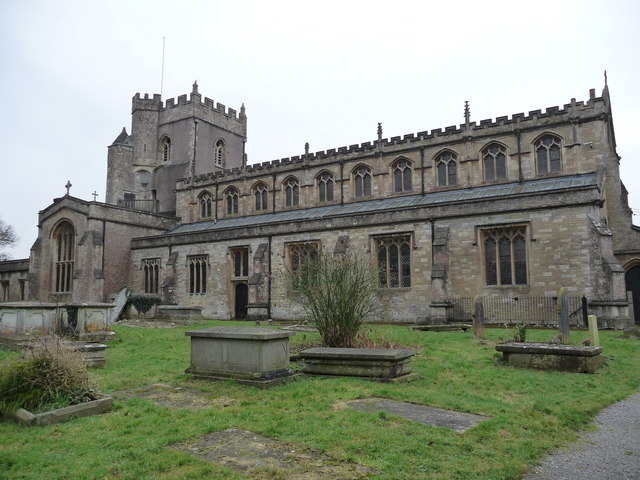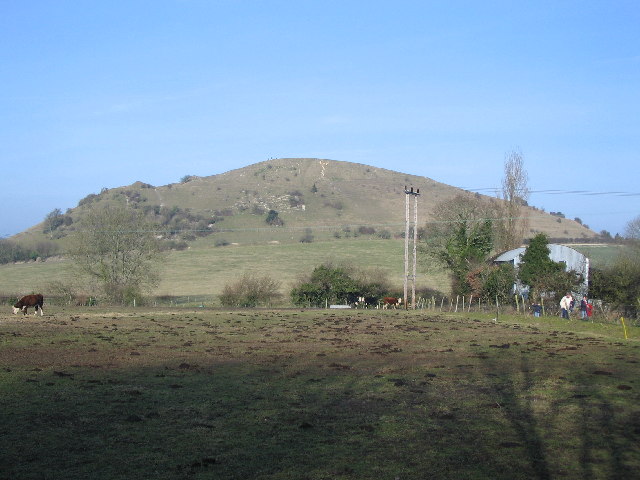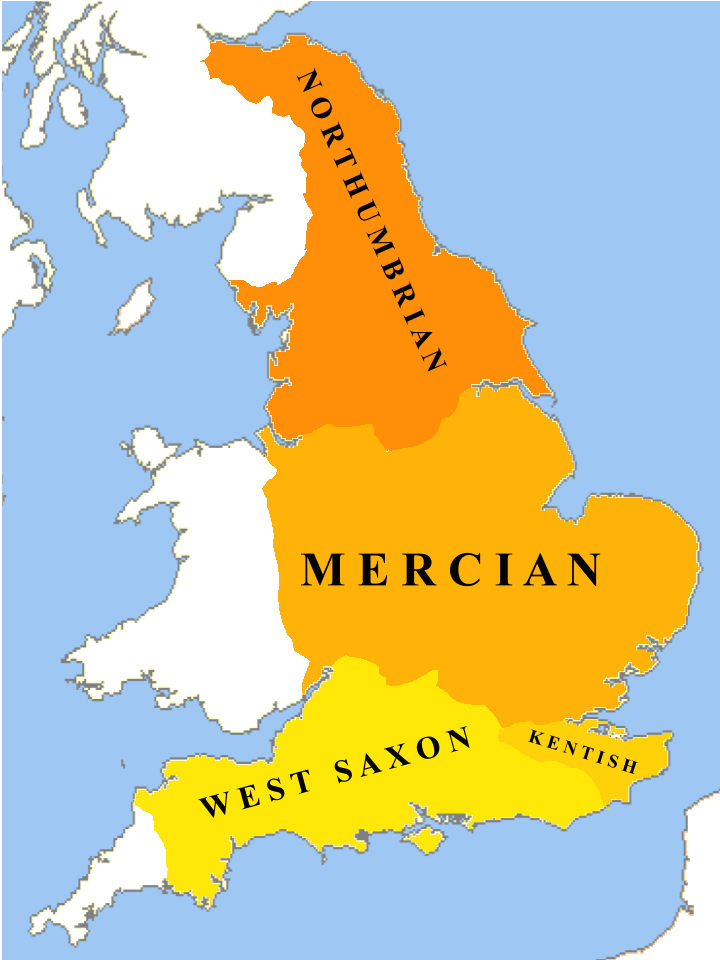|
Warminster
Warminster () is a historic market town and Civil parishes in England, civil parish in south-west Wiltshire, England, on the western edge of Salisbury Plain. The parish had a population of 18,173 in 2021. The name ''Warminster'' occurs first in the early 10th century and the St Denys' Church, Warminster, Minster Church of St Denys was begun in the 11th century. The High Street and Market Place have many fine buildings including the Warminster Athenaeum, Athenaeum Centre, the Warminster Town Hall, Town Hall, St Lawrence Chapel, The Old Bell and a variety of independent shops. Several Army establishments, known collectively as the Warminster Garrison, are on the edges of the town. Etymology The origin of the root ''Wor'' is ''wara'', the Genitive case, genitive plural of the Old English noun ''waru'' meaning "those that care for, watch, guard, protect, or defend." It was used as an endonym by both Goths and Jutes. Their specific ethnonym is unknown, though it likely was related ... [...More Info...] [...Related Items...] OR: [Wikipedia] [Google] [Baidu] |
St Denys' Church, Warminster
St Denys' Church (or the Minster Church of St Denys) is the Church of England parish church, parish church of the town of Warminster, Wiltshire, England, and is the town's oldest church. Begun in the 11th century, rebuilt in the 14th and restored in the 19th, it is a Grade II* listed building. History and architecture Although the 1086 Domesday Book did not record a church or priest, the name Warminster was in use in the early 10th century, implying the presence of a Anglo-Saxons, Saxon Minster (church), minster church. By the 12th century the church was dedicated to Saint Denis of Paris, Saint Denys. The church stands in the northwest of the town, which has developed away from the site of the Saxon settlement. The present building is built in limestone and is cruciform in plan; its earliest parts are from the 11th century, within the crossing and the base of the tower. There was rebuilding or extensive remodelling in the 14th century, and in the 15th a two-bay south chapel wa ... [...More Info...] [...Related Items...] OR: [Wikipedia] [Google] [Baidu] |
Warminster Town Hall
Warminster Town Hall is a former municipal building in the Market Place of Warminster, Wiltshire, England. The structure, which served as the headquarters of Warminster Urban District Council, is a Grade II listed building. History The first town hall in Warminster, which was erected on the north side of the High Street on the corner with the Close, was completed in 1711 but, after it became an obstruction to traffic, it was demolished in 1830. The current building was built on behalf of the 2nd Marquess of Bath and modelled on his ancestral home, Longleat. It was designed by Edward Blore in the Tudor style, built in ashlar stone and was completed in 1837. The design involved a symmetrical main frontage with three bays facing onto the Market Place, near its junction with the High Street; the central bay, which was deeply recessed, featured a porch with a round headed entrance and cast iron gates surmounted by the marquess's coat of arms. There was a quadrilateral-shaped panel ... [...More Info...] [...Related Items...] OR: [Wikipedia] [Google] [Baidu] |
Warminster Garrison
Warminster Garrison is a military garrison of the British Army, on the edge of Salisbury Plain in Wiltshire, England. History The history of Warminster's military garrison can be traced back to Roman Britain, where a small camp was located on the side of the current Battlesbury Barracks (part of the garrison). However, following Options for Change announced following the Dissolution of the Soviet Union and subsequent end of the Cold War, Headquarters, Combined Arms Training Centre (CATC) located in Warminster was dual-headed as Headquarters, Warminster Garrison and Warminster Training Centre on 1 April 1993. This itself formed between a merger of the now defunct Headquarters School of Infantry and the Barracks, Warminster (today known as Battlesbury Barracks). All three of these elements merged into the Warminster Training Centre (WTC). On 4 May 1995, as part of the second phase of Options for Change, the Infantry Support Weapons Wing at AAC Netheravon closed and its componen ... [...More Info...] [...Related Items...] OR: [Wikipedia] [Google] [Baidu] |
Warminster Athenaeum
Warminster Athenaeum is a Victorian theatre in Warminster, Wiltshire, England, and a Grade II listed building In the United Kingdom, a listed building is a structure of particular architectural or historic interest deserving of special protection. Such buildings are placed on one of the four statutory lists maintained by Historic England in England, Hi .... Built in Jacobean style in 1857/8 to designs by William Jervis Stent, it is held in trust on behalf of the residents of Warminster by a charitable trust and is Wiltshire's oldest working theatre. It is one of the oldest non-cinema venues in the country to still be showing films - the first having been presented in 1897. The building was originally a literary institution with a large lecture room, a reading room, classrooms and a library. Lectures, entertainment, plays and concerts were held. From 1895 the building was owned by the Urban District Council. In 1912, Albany Ward leased the auditorium and converted it into ... [...More Info...] [...Related Items...] OR: [Wikipedia] [Google] [Baidu] |
South West Wiltshire (UK Parliament Constituency)
South West Wiltshire is a List of United Kingdom Parliament constituencies, constituency in Wiltshire, England. The constituency has been represented in the House of Commons of the United Kingdom, House of Commons of the Parliament of the United Kingdom, UK Parliament by Andrew Murrison, a Conservative Party (UK), Conservative, since its inauguration in 2010.As with all constituencies, South West Wiltshire elects one Member of Parliament (MP) by the first past the post system of election at least every five years. History The constituency was created for the 2010 United Kingdom general election, 2010 general election, following the Fifth Periodic Review of Westminster constituencies tasked to the Boundary Commission for England, Boundary Commission, by which Parliament increased the number of seats in the county from six to seven. The previous Westbury (UK Parliament constituency), Westbury constituency was abolished: the northern part (including the town of Bradford-on-Avon) w ... [...More Info...] [...Related Items...] OR: [Wikipedia] [Google] [Baidu] |
Wiltshire
Wiltshire (; abbreviated to Wilts) is a ceremonial county in South West England. It borders Gloucestershire to the north, Oxfordshire to the north-east, Berkshire to the east, Hampshire to the south-east, Dorset to the south, and Somerset to the west. The largest settlement is Swindon, and Trowbridge is the county town. The county has an area of and a population of 720,060. The county is mostly rural, and the centre and south-west are sparsely populated. After Swindon (183,638), the largest settlements are the city of Salisbury (41,820) and the towns of Chippenham (37,548) and Trowbridge (37,169). For local government purposes, the county comprises two unitary authority areas: Swindon and Wiltshire. Undulating chalk downlands characterize much of the county. In the east are Marlborough Downs, which contain Savernake Forest. To the south is the Vale of Pewsey, which separates the downs from Salisbury Plain in the centre of the county. The south-west is also downland, ... [...More Info...] [...Related Items...] OR: [Wikipedia] [Google] [Baidu] |
Cley Hill
Cley Hill () is a prominent hill to the west of Warminster in Wiltshire, England. Its summit has a commanding view of the Wiltshire / Somerset county boundary, at elevation. The land is in Corsley parish and is owned by the National Trust. A area of chalk grassland at Cley Hill was SSSI notification, notified as a biological Site of Special Scientific Interest in 1975. The land is managed by the National Trust, having been donated to the charity in 1954 by the Henry Thynne, 6th Marquess of Bath, 6th Marquess of Bath. Archaeological features include a large univallate British Iron Age, Iron Age hill fort, two bowl barrows and medieval strip lynchets. In 1812, local antiquarian Sir Richard Hoare, 2nd Baronet, Sir Richard Hoare attempted to excavate the mound at the top of the hill – leaving a hole which is still visible – but found that it had been looted by Grave robbery, grave robbers. The south west side of the hill was Quarry, quarried significantly in the 19th century ... [...More Info...] [...Related Items...] OR: [Wikipedia] [Google] [Baidu] |
Battlesbury Camp
Battlesbury Camp is the site of an Iron Age bivallate hill fort on Battlesbury Hill near the town of Warminster in Wiltshire, South West England. Excavations and surveys at the site have uncovered various finds and archaeological evidence. Background Hill forts developed in the Late Bronze and Early Iron Age, roughly the start of the first millennium BC. The reason for their emergence in Britain, and their purpose, has been a subject of debate. It has been argued that they could have been military sites constructed in response to invasion from continental Europe, sites built by invaders, or a military reaction to social tensions caused by an increasing population and consequent pressure on agriculture. The dominant view since the 1960s has been that the increasing use of iron led to social changes in Britain. Deposits of iron ore were located in different places to the tin and copper ore necessary to make bronze, and as a result trading patterns shifted and the old elites ... [...More Info...] [...Related Items...] OR: [Wikipedia] [Google] [Baidu] |
Scratchbury Camp
Scratchbury Camp is the site of an Iron Age univallate hillfort on Scratchbury Hill, overlooking the River Wylye, Wylye valley about 1 km northeast of the village of Norton Bavant in Wiltshire, England. The fort covers an area of and occupies the summit of the hill on the edge of Salisbury Plain, with its four-sided shape largely following the natural contours of the hill. The Iron Age Britain, Iron Age hillfort dates to around 100 BC, but contains the remains of an earlier and smaller D-shaped Enclosure (archaeology), enclosure or camp. The age of this earlier earthwork is currently subject to debate, and has been variously interpreted due to the inconclusive and incomplete nature of previous and differing excavation records; it may be early Iron Age dating to around 250 BC, but it has also been interpreted as being Bronze Age Britain, Bronze Age, dating to around 2000 BC. There are seven Tumulus, tumuli located within the enclosure of the fort, which were excavated in th ... [...More Info...] [...Related Items...] OR: [Wikipedia] [Google] [Baidu] |
Wiltshire (district)
Wiltshire is a Unitary authorities of England, unitary authority area in the ceremonial county of Wiltshire, South West England. It was formed in April 2009 following the abolition of Wiltshire County Council and the districts of Kennet District, Kennet, North Wiltshire, Salisbury District, Salisbury, and West Wiltshire. They were all replaced by Wiltshire Council, which is based at County Hall, Trowbridge, County Hall in Trowbridge. The remaining part of the ceremonial county is the Borough of Swindon, administered by a separate unitary authority. In 2022 it had a population of 515,885. Salisbury is the only city in the district and its largest settlement. After the city, the next largest urban areas are Chippenham and Trowbridge. History Until 2009, Wiltshire had four districts – Kennet District, Kennet, North Wiltshire, Salisbury District, Salisbury, and West Wiltshire – together with the Borough of Swindon which had been made a separate Unitary authorities of England, u ... [...More Info...] [...Related Items...] OR: [Wikipedia] [Google] [Baidu] |
Minster (church)
Minster is an honorific title given to particular churches in England and Wales, most notably York Minster in Yorkshire, Westminster Abbey in London and Southwell Minster in Nottinghamshire. The term ''minster'' is first found in royal foundation charters of the 7th century, when it designated any settlement of clergy living a communal life and endowed by charter with the obligation of maintaining the daily office of prayer. Widespread in 10th-century England, minsters declined in importance with the systematic introduction of parishes and parish churches from the 11th century onwards. The term continued as a title of dignity in later medieval England, for instances where a cathedral, monastery, collegiate church or parish church had originated with an Anglo-Saxon foundation. Eventually a minster came to refer more generally to "any large or important church, especially a collegiate or cathedral church". In the 21st century, the Church of England has designated addition ... [...More Info...] [...Related Items...] OR: [Wikipedia] [Google] [Baidu] |
Old English
Old English ( or , or ), or Anglo-Saxon, is the earliest recorded form of the English language, spoken in England and southern and eastern Scotland in the Early Middle Ages. It developed from the languages brought to Great Britain by Anglo-Saxon settlers in the mid-5th century, and the first Old English literature dates from the mid-7th century. After the Norman Conquest of 1066, English was replaced for several centuries by Anglo-Norman language, Anglo-Norman (a langues d'oïl, type of French) as the language of the upper classes. This is regarded as marking the end of the Old English era, since during the subsequent period the English language was heavily influenced by Anglo-Norman, developing into what is now known as Middle English in England and Early Scots in Scotland. Old English developed from a set of Anglo-Frisian or Ingvaeonic dialects originally spoken by Germanic tribes traditionally known as the Angles (tribe), Angles, Saxons and Jutes. As the Germanic settlers ... [...More Info...] [...Related Items...] OR: [Wikipedia] [Google] [Baidu] |





